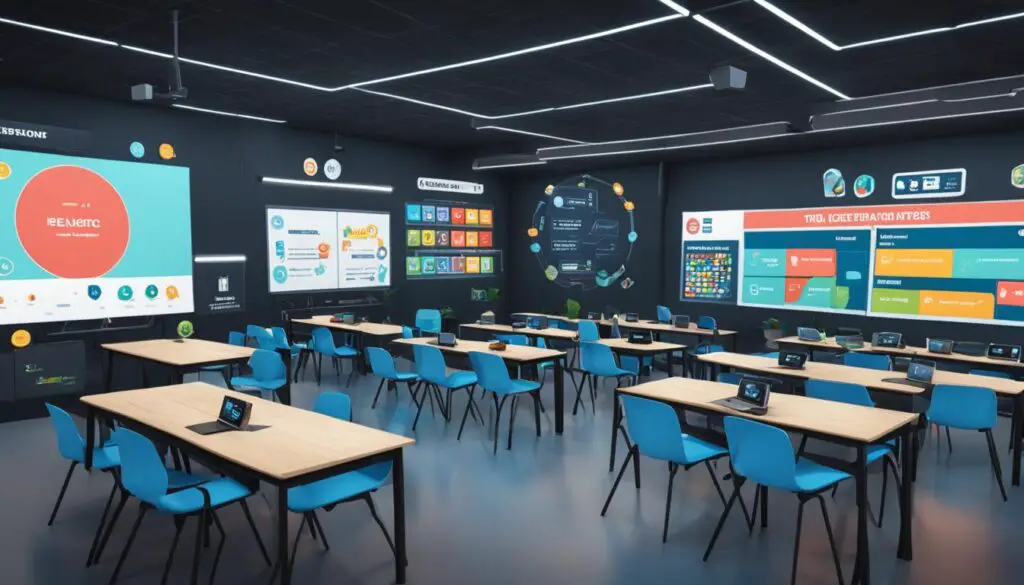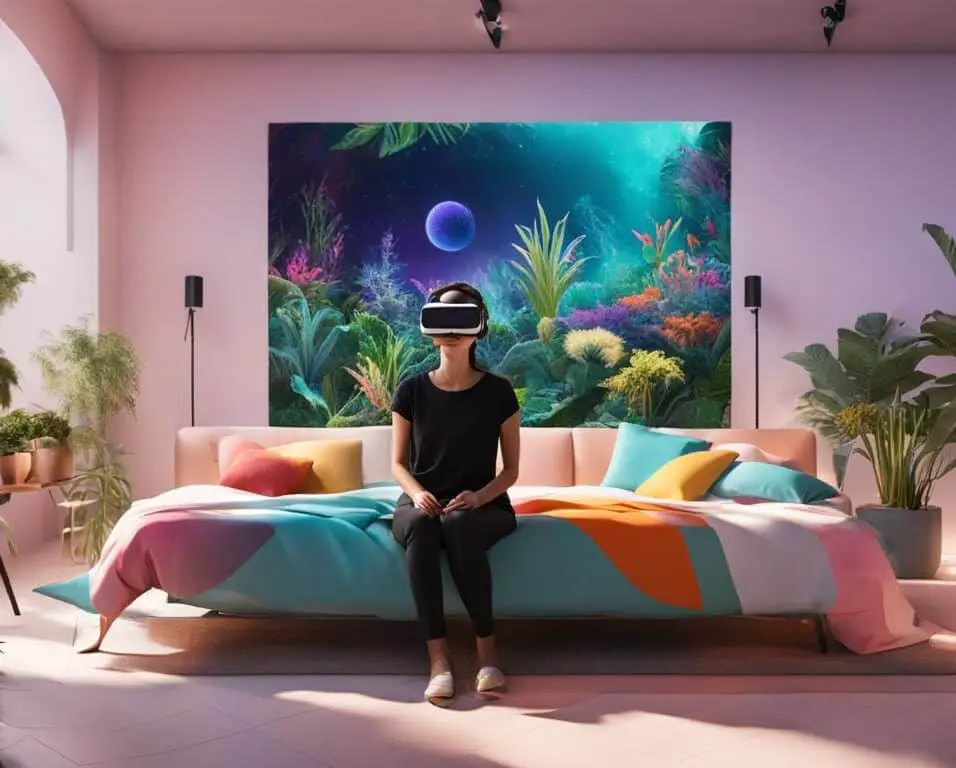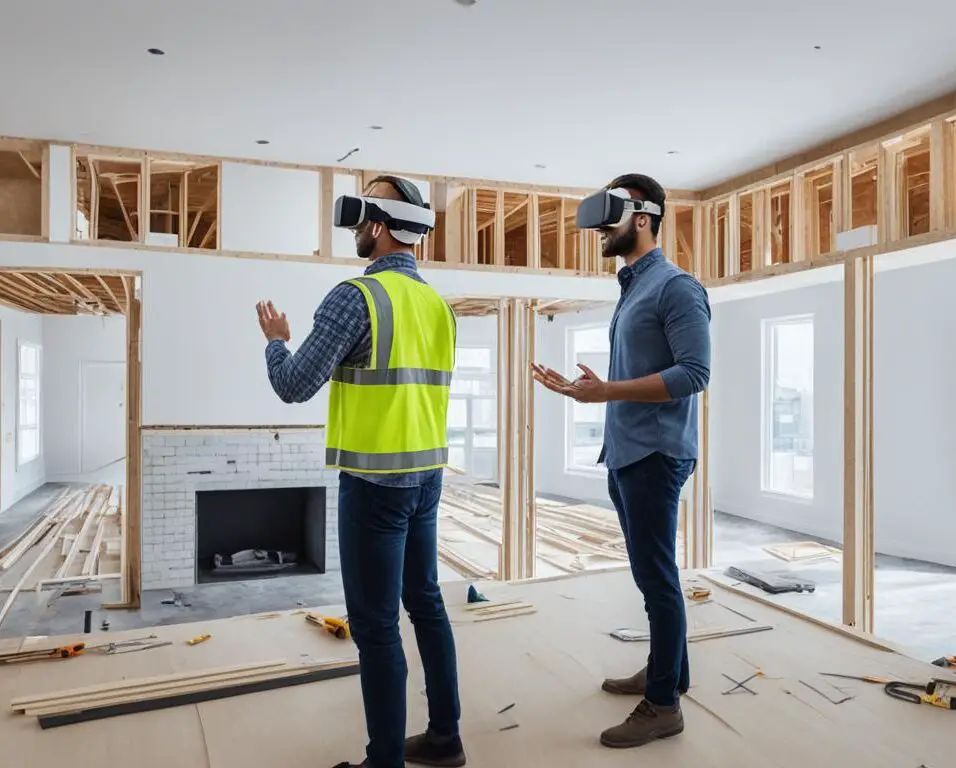Innovative 3D VR Home Designing Techniques for Modern Living
Welcome to my blog post on innovative 3D VR home designing techniques for modern living. In today’s fast-paced world, where technology is advancing at a rapid pace, it’s no surprise that our homes are also evolving. Gone are the days of traditional home design; now, we have the power to create immersive and interactive virtual reality experiences. These cutting-edge techniques enable homeowners and designers to visualize their dream spaces like never before.
With the use of advanced 3D modeling and virtual reality technology, individuals can now explore and interact with their future homes before construction even begins. This revolutionary approach to home design allows for better planning, customization, and efficiency. Whether you’re an architect looking to showcase your designs or a homeowner with a vision, 3D VR home designing techniques provide an exciting, engaging, and interactive solution.
Key Takeaways:
- 1. Innovative 3D VR home designing techniques offer a new level of customization and interactivity.
- 2. Virtual reality enables homeowners and designers to explore and visualize spaces before construction begins.
- 3. Advanced 3D modeling technology allows for better planning and efficiency in home design.
- 4. 3D VR home designing techniques are revolutionizing the way we approach modern living.
- 5. Embracing these innovative techniques can lead to stunning, personalized, and functional homes.
Personalized Learning Experiences
EdTech startups are revolutionizing education by leveraging AI algorithms to create personalized learning experiences for students. This innovative approach analyzes each learner’s performance and adapts the curriculum to suit their individual learning speed, style, and interests. Through the power of AI, students are no longer confined to a one-size-fits-all approach; instead, they are empowered with customized educational pathways that cater to their unique needs and preferences.
The implementation of personalized learning has shown promising results in improving student engagement and outcomes. By tailoring the learning experience to each student, educators can create an environment that fosters active participation, motivation, and genuine interest in the subject matter. Students are more likely to be engaged and invested in their education when it aligns with their own learning styles and interests.
With the help of AI algorithms, teachers can gain valuable insights into student progress and adjust their teaching strategies accordingly. These algorithms can identify areas where students may be struggling and provide targeted support to address their specific needs. Feedback is immediate, allowing students to learn from their mistakes and make improvements at their own pace.
Personalized learning also allows students to take ownership of their education by giving them choices and autonomy. They can explore topics of interest, dive deeper into areas they find challenging, and learn at a pace that suits them best. This individualized approach fosters a sense of empowerment and self-efficacy, promoting lifelong learning skills that extend beyond the classroom.
“Personalized learning is transforming the way education is approached, giving students the opportunity to unlock their full potential and achieve academic success.”
By combining the power of AI algorithms and a customized curriculum, personalized learning experiences are shaping the future of education. Students are no longer passive recipients of information; instead, they are active participants in their own learning journey. This shift towards personalized learning ensures that every student has the opportunity to thrive and reach their full potential.
Benefits of Personalized Learning:
- Improved student engagement and motivation
- Higher academic performance and outcomes
- Targeted support and feedback
- Individualized learning pathways
- Enhanced critical thinking and problem-solving skills
- Promotion of lifelong learning
| Personalized Learning | Traditional Learning |
|---|---|
| Customized curriculum tailored to individual needs | One-size-fits-all curriculum |
| Student-centered approach | Teacher-centered approach |
| Active and engaged learners | Passive learners |
| Flexible pacing and learning styles | Rigid pacing and limited learning style options |
| Immediate feedback and targeted support | Delayed feedback and generalized support |
Real-World Example:
In the field of language learning, platforms like Duolingo utilize AI algorithms to provide personalized language instruction. The platform adapts to each learner’s proficiency level, learning speed, and individual goals, ensuring that they receive targeted exercises and feedback to enhance their language skills. Through personalized learning, Duolingo has made language learning accessible and enjoyable for millions of users worldwide.
Gamification of Learning
EdTech startups are embracing the power of gamification to revolutionize the way students learn. By incorporating game design elements into educational environments, we create a more interactive and enjoyable learning experience.
Gamification enhances student engagement by tapping into our natural desire for competition, achievement, and rewards. By turning lessons into interactive games, students are motivated to actively participate and explore concepts further.
One of the key benefits of gamification is its ability to significantly improve retention rates. When learning is transformed into a fun and interactive experience, students are more likely to remember the information they have learned. The gamified approach creates a memorable learning experience that goes beyond traditional methods.
Beyond improved retention rates, gamification also fosters critical thinking, problem-solving, and collaboration skills. Students are challenged to strategize, think creatively, and work together to overcome obstacles within the game. These skills are essential not only for academic success but also for real-world applications.
“Gamification in education offers a unique opportunity to transform the way students engage with learning materials. By making education enjoyable, we create a positive association with the learning process, inspiring students to become lifelong learners.”
Examples of Gamification in Education:
- A math game where students solve equations to progress through levels, earning points and rewards along the way.
- An interactive history quiz that takes students on a virtual journey through significant events, allowing them to unlock new historical facts.
- A language learning app that incorporates mini-games to practice vocabulary, pronunciation, and grammar.
Through gamification, the learning process becomes dynamic, interactive, and enjoyable. By creating a gamified learning environment, we transform education into an exciting adventure that captivates students’ attention while fostering a deep understanding of the subject matter.

Benefits of Gamification in Education:
| Benefits | Description |
|---|---|
| Higher Retention Rates | Gamification enhances memory retention by making learning more engaging and interactive. |
| Improved Student Engagement | By transforming education into a game-like experience, students are motivated to actively participate and invest in their learning. |
| Enhanced Critical Thinking Skills | Gamification challenges students to think critically, strategize, and problem-solve, fostering valuable skills for real-world applications. |
| Collaborative Learning Opportunities | Gamified experiences often provide opportunities for students to work together, fostering teamwork and collaboration skills. |
| Personalized Learning Paths | Gamification allows for customization, adapting the learning experience to suit the individual needs and preferences of students. |
Immersive Technologies
Virtual Reality (VR) and Augmented Reality (AR) technologies are revolutionizing education by providing immersive learning experiences. These technologies enable students to explore complex concepts in a virtual environment, enhancing the interactivity and impact of education.
One notable application of immersive technologies in education is in the field of medicine. Medical students can now simulate surgeries and procedures through VR, offering them a realistic experience without the risks associated with real-life operations. This immersive approach allows students to practice and refine their skills with confidence, ultimately enhancing their understanding and proficiency in their field.
By creating virtual environments and simulations, immersive technologies provide students with hands-on experiences that are otherwise limited or unavailable in traditional classrooms. Whether it’s exploring historical landmarks, conducting scientific experiments, or dissecting virtual organisms, these technologies bring subjects to life, making education more engaging and impactful.
Immersive learning experiences foster student engagement by capturing their attention and catering to diverse learning styles. Through interactive simulations and virtual scenarios, students actively participate in the learning process, allowing for a deeper understanding and retention of knowledge. This engagement not only helps students grasp complex concepts but also cultivates critical thinking and problem-solving skills.
The Impact of Immersive Technologies in Education
The use of immersive technologies in education has demonstrated several benefits:
- Enhanced student engagement
- Improved understanding and retention of knowledge
- Hands-on experiences in a safe and controlled environment
- Opportunities for exploration and experimentation
- Catering to different learning styles
- Development of critical thinking and problem-solving skills
Through the integration of immersive technologies, education becomes more interactive, dynamic, and tailored to the needs of individual students. As these technologies continue to advance, the potential for creating impactful and memorable learning experiences expands exponentially.

Image: A student interacting with virtual reality technology in a classroom setting
Focus on STEM and Coding
Science, Technology, Engineering, and Mathematics (STEM) education is receiving increased emphasis, and EdTech startups are at the forefront of developing tools and platforms to support these subjects. One particular area of focus is coding, which is being integrated into curriculums at an early age. Interactive and user-friendly platforms are available to facilitate learning programming skills, empowering students to become proficient in this essential digital language.
STEM education and coding provide students with a strong foundation for future careers in technology. These fields equip students with invaluable problem-solving, critical thinking, and analytical skills. Furthermore, programming skills are becoming increasingly sought after in various industries, offering promising career prospects.
Interactive learning platforms tailored to coding foster an engaging and immersive learning experience. These platforms provide opportunities for students to practice coding in interactive programming environments, encouraging experimentation and creativity. With user-friendly interfaces and step-by-step guidance, students can acquire programming skills at their own pace.
Coding also promotes interdisciplinary learning by combining STEM disciplines with creative problem-solving. By integrating coding into curriculums, students develop a holistic understanding of technology and its applications. They gain the ability to create, innovate, and navigate the digital world effectively.
Benefits of STEM education and coding:
- Prepares students for careers in technology and STEM-related fields
- Develops problem-solving, critical thinking, and analytical skills
- Enhances creativity and innovation
- Encourages interdisciplinary learning
- Promotes engagement and active learning
“Coding is the language of the future, and STEM education paves the way for students to excel in the digital era.”
Integrating STEM education and coding into school curriculums equips students with essential skills for the 21st century. By fostering a deep understanding of technology and providing opportunities for hands-on learning, students are prepared for the challenges and opportunities of the future.
Next, let’s explore the impact of AI-powered assessment tools in education.
| STEM Education | Coding | Interactive Learning Platforms | Programming Skills |
|---|---|---|---|
| Emphasizes science, technology, engineering, and mathematics | Integrates coding into curriculums | Engaging and user-friendly platforms for interactive learning | Acquisition of programming skills |
| Prepares students for careers in technology and STEM fields | Develops problem-solving and critical thinking skills | Encourages creativity and innovation | Enables students to navigate the digital world effectively |
| Fosters engagement and active learning | Provides interdisciplinary learning experiences | Allows students to practice coding at their own pace | Creates opportunities for future career prospects |
AI-Powered Assessment Tools
Artificial intelligence (AI) is revolutionizing the way assessments are conducted in education. With the help of AI-powered tools, educators can now provide immediate feedback, grade assignments more efficiently, and identify areas where students may need additional support. This real-time feedback loop enhances the learning process and allows educators to tailor their teaching strategies to the unique needs of each student.
AI-powered assessment tools play a significant role in promoting student success and academic growth. By leveraging advanced algorithms and machine learning, these tools analyze student performance and provide personalized support. Whether it’s identifying concepts that require reinforcement or suggesting targeted resources for improvement, AI-powered assessment tools ensure that students receive the guidance they need to excel.
“The integration of AI in assessment is transforming the educational landscape, enabling educators to provide students with immediate feedback and personalized support, ultimately leading to improved learning outcomes.”
Not only do AI-powered assessment tools benefit students, but they also offer tremendous advantages for educators. The efficiency of grading and feedback distribution allows teachers to dedicate more time to other aspects of instruction and student engagement. Moreover, AI-powered tools provide valuable insights into student performance trends, enabling educators to make data-driven decisions and refine their teaching strategies.
Key Benefits of AI-Powered Assessment Tools:
- Immediate feedback: Students receive real-time feedback on their assignments, allowing them to address misconceptions and track their progress.
- Efficient grading: With automated grading systems, educators save time and effort, enabling them to provide timely feedback and support to their students.
- Personalized support: AI-powered tools adapt to the individual needs of students, offering tailored recommendations and resources for improvement.
- Data-driven insights: Educators gain access to comprehensive data on student performance, enabling them to make informed decisions and optimize instructional practices.
By harnessing the power of artificial intelligence, immediate feedback, efficient grading, and personalized support become integral parts of the educational experience. With AI-powered assessment tools, educators can create a more effective and engaging learning environment that caters to the unique needs of every student.
Conclusion
The integration of innovative 3D VR home designing techniques, personalized learning, immersive technologies, and AI in education is reshaping the way we learn and teach. These advancements have revolutionized the educational landscape, providing students with engaging and interactive learning experiences.
By incorporating 3D VR home designing techniques, students can explore architectural concepts in a realistic virtual environment, enhancing their understanding and creativity. Personalized learning approaches, driven by AI algorithms, offer tailored educational pathways that cater to the unique needs and preferences of each student. This customizability promotes student engagement and improves learning outcomes.
The use of immersive technologies, such as virtual reality and augmented reality, takes learning to a whole new level. These technologies create immersive learning experiences, allowing students to visualize complex concepts and engage with educational content in a more interactive and impactful way. This fosters deeper understanding and retention of information.
Furthermore, the integration of AI in education brings forth a wide range of benefits. AI-powered tools streamline assessment processes, providing immediate feedback and efficient grading. This allows educators to identify areas where students need additional support and deliver personalized assistance. The use of AI and data analytics in education also offers valuable insights into student progress, enabling educators to refine their teaching strategies accordingly.
In conclusion, the combination of 3D VR home designing techniques, personalized learning, immersive technologies, and AI in education is revolutionizing the learning experience. These innovative approaches and technologies foster student engagement, improve learning outcomes, and equip students with essential skills for the future. As we embrace these advancements, we create a modern and effective learning environment that prepares students for the demands of the ever-evolving world.
FAQ
How do 3D VR home designing techniques benefit modern living?
3D VR home designing techniques allow individuals to visualize and experience their future living spaces in a virtual environment. This immersive technology enables users to make informed decisions about their home design, ensuring that it meets their specific needs and preferences.
How does personalized learning enhance student engagement?
Personalized learning uses AI algorithms to analyze a student’s performance and tailor the curriculum to their individual learning speed, style, and interests. This customized approach to education increases student engagement by providing relevant and meaningful learning experiences.
What is gamification of learning and how does it improve retention rates?
Gamification of learning integrates game design elements into educational environments to make learning more interactive and enjoyable. By introducing challenges, rewards, and competition, gamification increases student motivation and retention of knowledge.
How do immersive technologies like virtual reality and augmented reality enhance education?
Immersive technologies create interactive learning experiences by allowing students to explore complex concepts in a virtual environment. Virtual reality and augmented reality provide a realistic and engaging educational experience, enhancing student understanding and retention of information.
How does a focus on STEM and coding prepare students for the future?
STEM education and coding equip students with essential skills for careers in technology and the digital economy. By integrating coding into curriculums and providing interactive learning platforms, students develop problem-solving, critical thinking, and creativity skills necessary for future success.
What are the benefits of using AI-powered assessment tools in education?
AI-powered assessment tools provide immediate feedback, efficient grading, and identify areas where students may need additional support. This real-time feedback loop enhances the learning process and allows educators to tailor their teaching strategies to individual student needs.
How do 3D VR home designing techniques, personalized learning, immersive technologies, and AI in education shape the future of learning?
These innovative approaches and technologies create a modern and effective learning environment. They provide engaging and interactive learning experiences tailored to individual needs and preferences, while also preparing students for the skills required in the future workforce.








